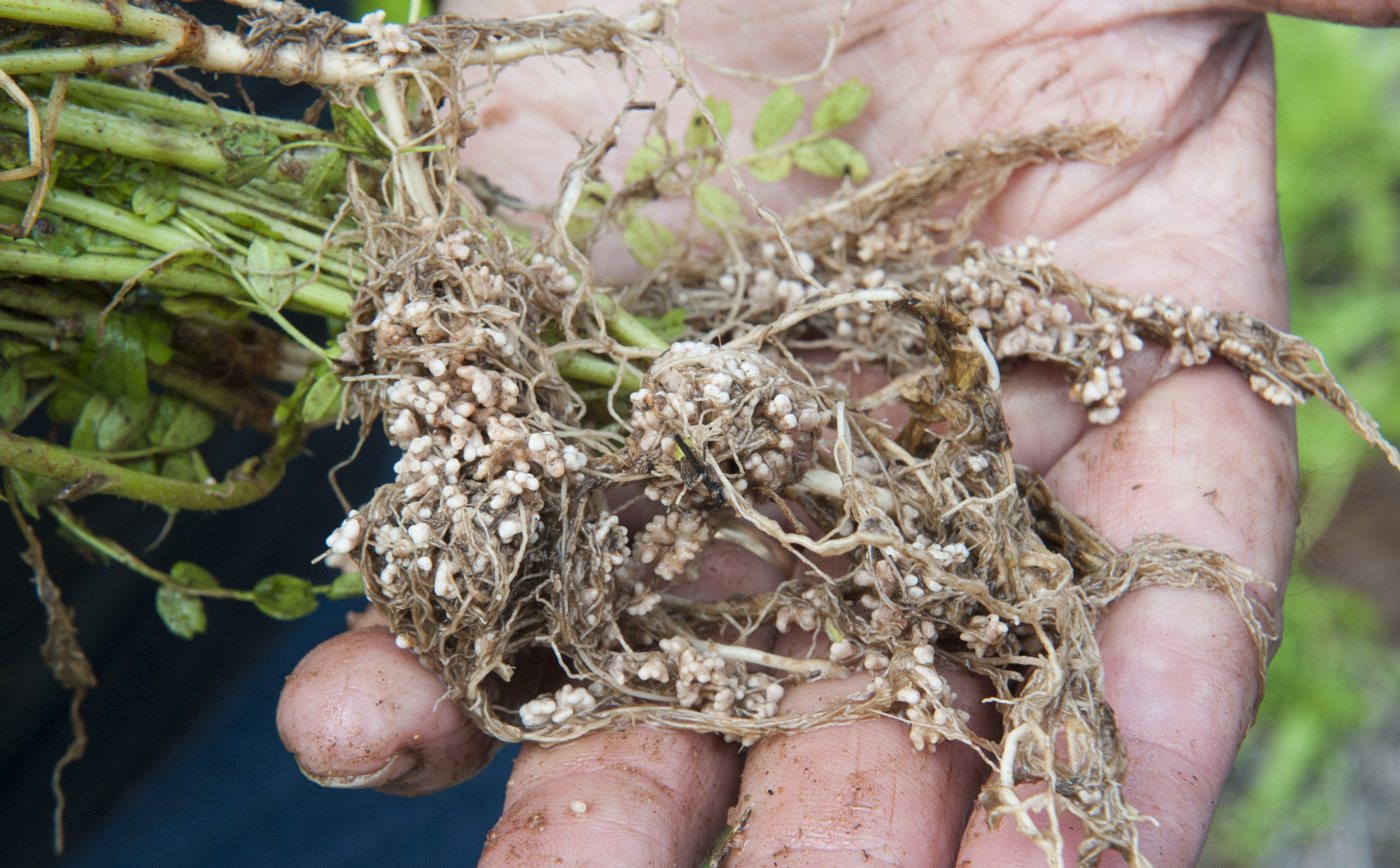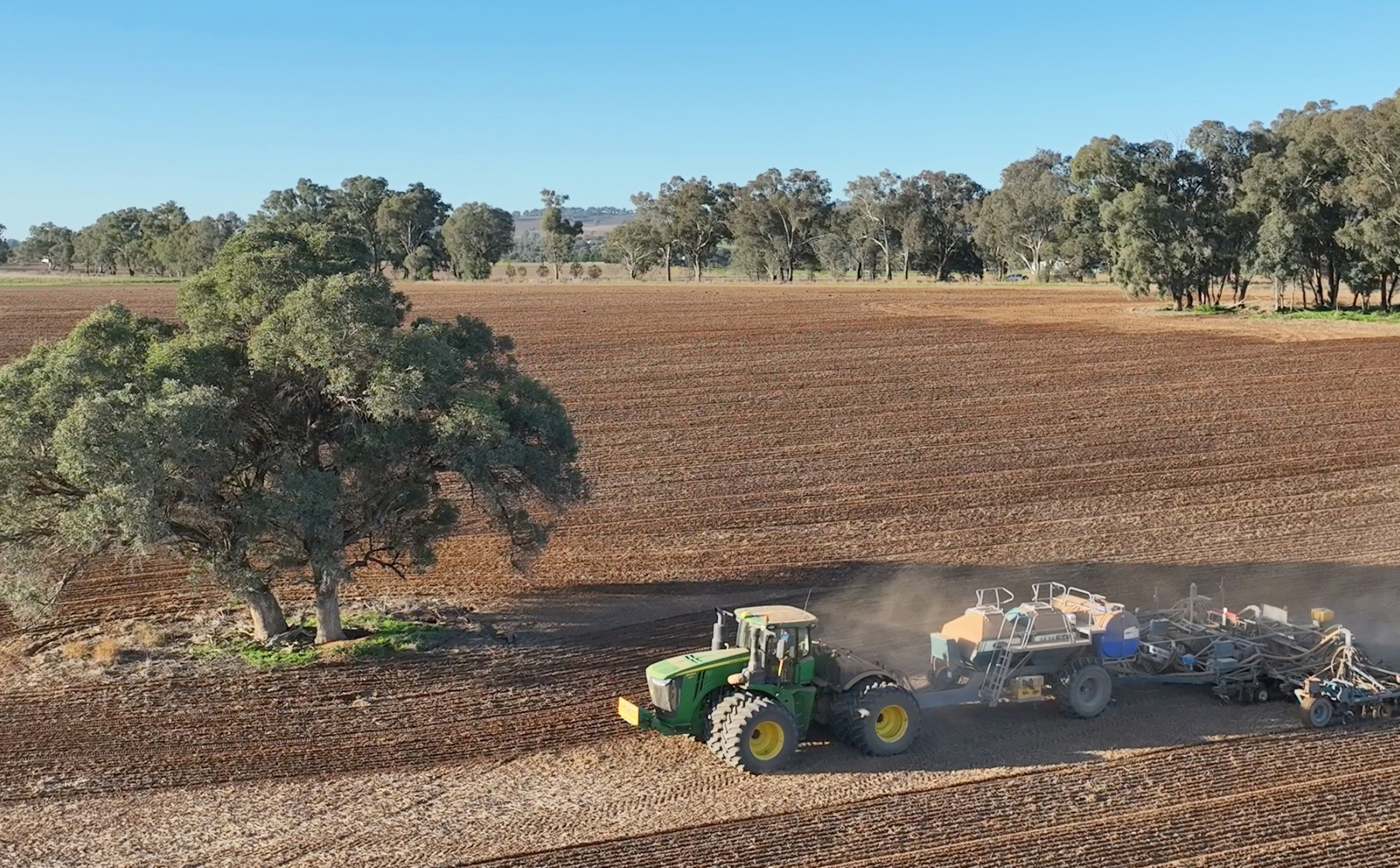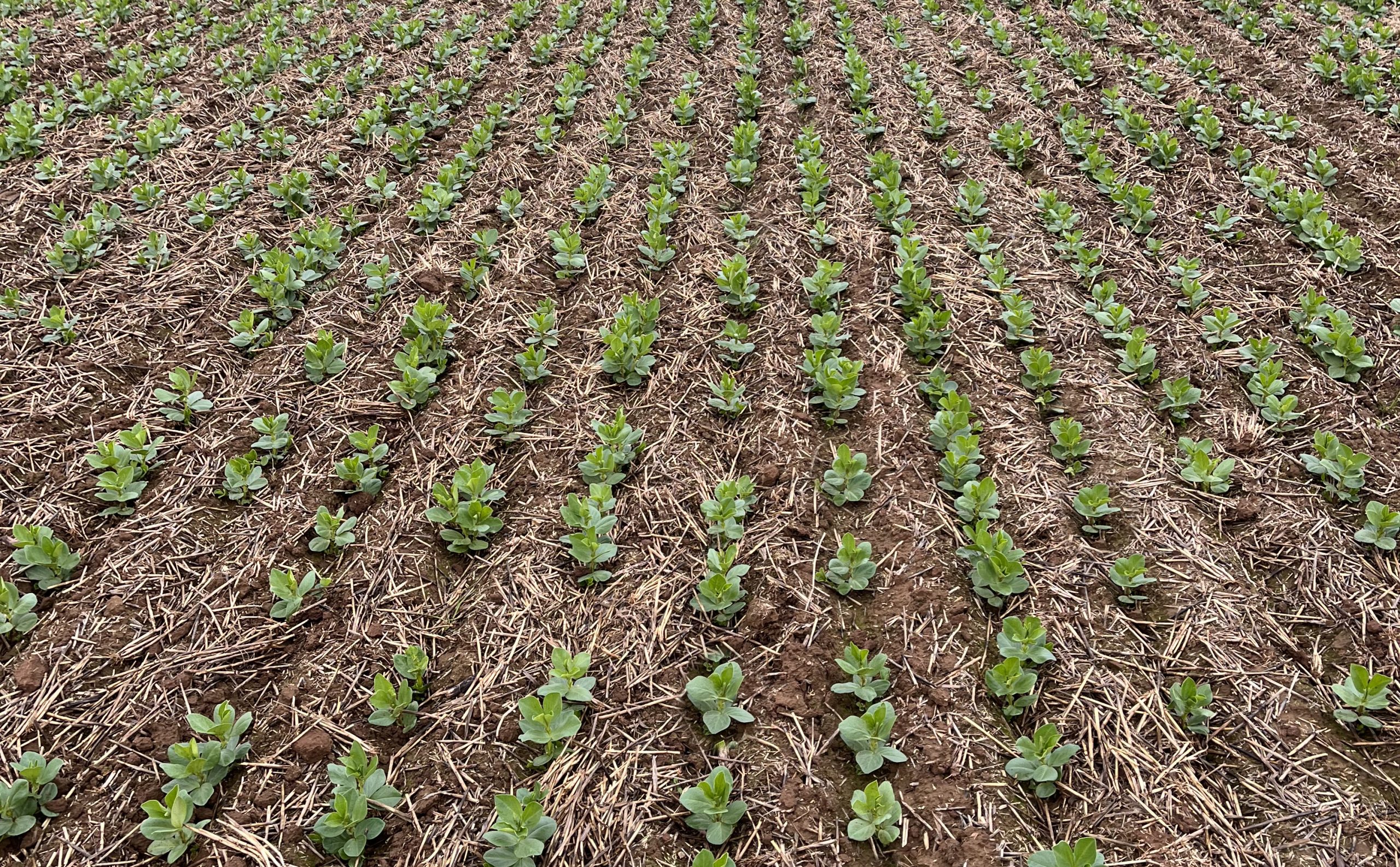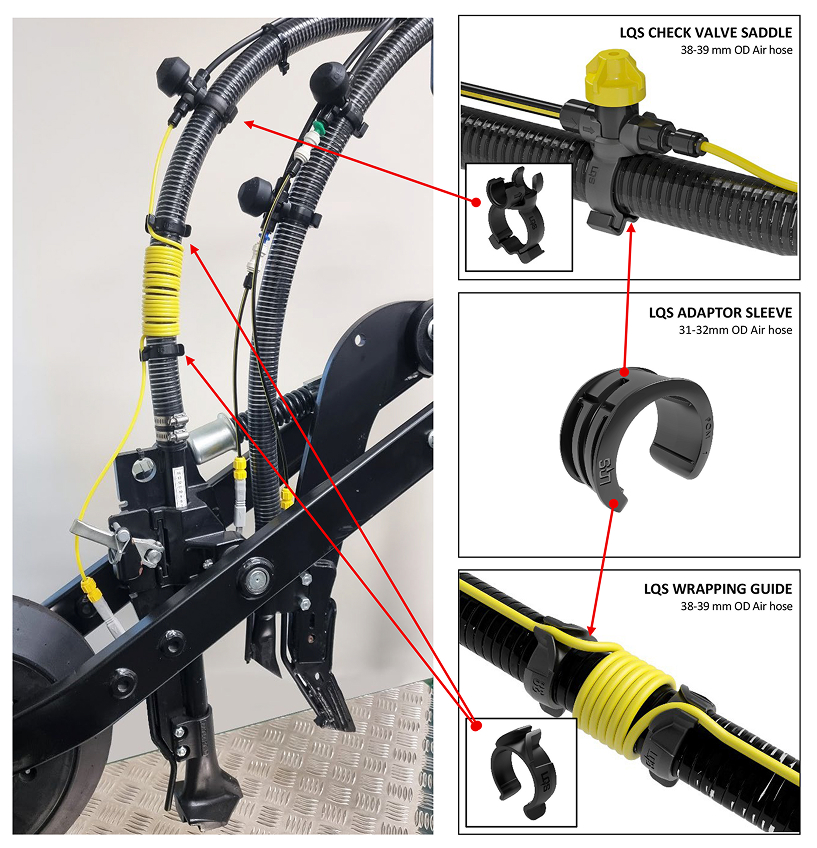Efficient In-Furrow Inoculation: Boost Nodulation and Legume Performance
Legumes depend on rhizobia bacteria to form root nodules and fix atmospheric nitrogen. Delivering live inoculants directly into the seed furrow during planting places the bacteria precisely where it’s needed—right alongside emerging roots—resulting in improved nodulation, better plant establishment and greater nitrogen fixation. This method is now widely adopted across Australian broadacre cropping for pulses such as vetch, lupins, chickpeas, and faba beans. No more pre-inoculating the seed, no more blockages, no more wasted seed and better strike rate.
Real-World Benefits from Liquid Systems (SA) Customers
Early Adopter: NSW grower Lee Lonergan says liquid inoculation has transformed his chickpea program. Previously, seed treated via auger with peat slurry often split or hardened, reducing germination and requiring increased handling. By switching to in-furrow injection through his Liquid System, Lee improved germination rates and reduced his fungicide costs.
“Inoculating through the Liquid System coats the seed and inoculates the soil—it creates the perfect little world for the seed to germinate,” he says. His chickpeas now emerge faster and more uniformly, with significantly reduced early yellowing. In a wet season, yields hit 3.5 t/ha—around triple the usual.
👉 Read Lonergan’s full story
Inoculating through the Liquid System coats the seed and inoculates the soil—it creates the perfect little world for the seed to germinate
QLD grower Dan Skerman uses freeze-dried inoculants, mixed and water-injected in-furrow for chickpeas and mungbeans. “Not having to pre-inoculate seed is so neat,” Dan says. “Once you’ve done it, you’re like, why the hell was I doing it the other way?” Liquid injection has streamlined his planting operation, resulting in consistently healthier and more vigorous crops.
👉 Read Skerman’s full story
Not having to pre-inoculate seed is so neat, Once you’ve done it, you’re like, why the hell was I doing it the other way?
NSW grower Tom Johnstone has moved to on-farm application of freeze-dried “Easy Rhiz” inoculants. Delivered through his Liquid System, it avoids blockages often caused by peat slurries. “It’s easy—just add water, shake, and it flows well through the system,” Tom explains. He’s had “plenty of nodulation” on his beans and found the process both time-saving and reliable.
👉 Read Johnstone’s full story
It’s easy—just add water, shake, and it flows well through the system, the plants look great and there’s plenty of Nodulation.
Common In-Furrow Inoculant Types
- Peat-Based Slurry: Traditional format with live rhizobia grown in peat and mixed with water. Effective, but prone to blockages and short shelf life.
- Freeze-Dried Powders: Convenient dry inoculants, rehydrated before application. Cleaner, longer-lasting, and flow better through equipment.
- Liquid Inoculants: Mixed with water and injected directly into the furrow. Requires clean, chlorine-free water and timely application to preserve viability.
Best Practices for In-Furrow Inoculation
- Precise Placement: Apply inoculant directly in the furrow on or with the seed to maximise root colonisation.
- Product Compatibility: Avoid mixing inoculants with trace elements, fertilisers or pesticides that may harm rhizobia. Apply in a separate stream.
- Clean Equipment: Use clean tanks and flush lines between products to prevent blockages and contamination.
- Environmental Conditions Apply inoculants in moist soil conditions and avoid exposure to extreme temperatures to preserve bacterial efficacy. Cover with Soil.
- Water Quality: Use only clean, non-chlorinated, or saline-free water—chlorine and heavy metals can kill rhizobia.
- Protect Viability: Use diaphragm pumps and keep operating pressure below 2.5 bar to prevent damage to live biologicals.
- AccurateTarget Rate: Reliable application equipment that evenly delivers the inoculant.
With the right application equipment and practices, in-furrow inoculation makes legume establishment easier, faster, and more consistent—delivering healthier plants, improved nitrogen fixation, and better overall returns.








